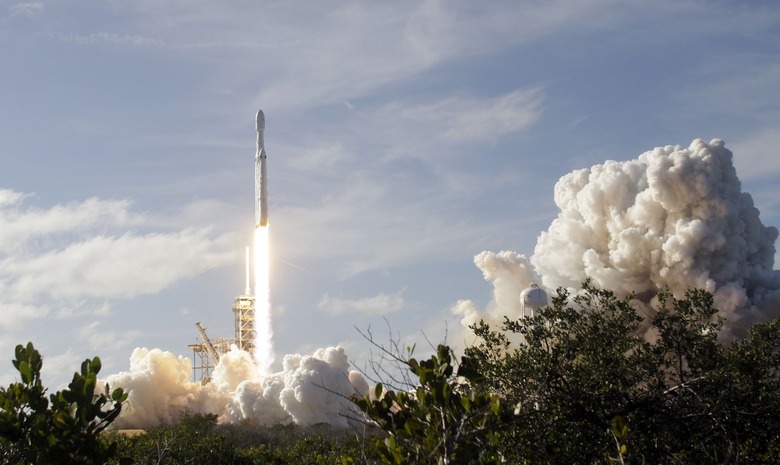Coronavirus Won't Stop SpaceX From Shooting Dozens Of New Satellites Into Space
- SpaceX is planning a launch in its Starlink satellite program for April 16th, Spaceflight Now reports.
- A SpaceX Falcon 9 will send dozens of tiny Starlink satellites into Earth orbit where they will join hundreds of others that have already been placed there in past missions.
- Eventually, SpaceX wants thousands of the satellites to form a grid around Earth and provide high-speed data access to every corner of the globe, but the project will take years to complete.
- Visit BGR's homepage for more stories.
The coronavirus pandemic has impacted just about every industry imaginable, and the business of commercial spaceflight is no different. Despite that, SpaceX is doing its best to keep on schedule, and that means ensuring that it slings as many of its astronomer-aggravating Starlink satellites into space as possible.
The company's next Starlink launch is currently slated for April 16th at the earliest and will take place from the launch facility at Kennedy Space Center in Florida. As is typically the case with Starlink missions, we're expecting SpaceX to release dozes of its pint-sized communications satellites simultaneously, and SpaceX will likely be live streaming the launch and deployment of its hardware.
Starlink is one of SpaceX's big bets on the future. It's a network of communications satellites that, when it's done, should be capable of providing high-speed data access to even the most remote areas of the planet. However, in order to make that dream a reality, SpaceX needs to launch a lot of satellites.
How many is "a lot"? Thousands at least, and potentially even tens of thousands. The company has a few hundred in space already but plans on around 12,000 eventually being deployed. If that all goes well, SpaceX could send as many as 42,000 satellites into orbit. It's an absolutely massive undertaking, and those thousands of spacecraft are being sent up in small batches, meaning that it's going to take several years for Starlink to show what it's truly capable of.
It's an ambitious project, and it's already raised the ire of the astronomy community at large. Starlink satellites are small, but they're not invisible, especially when peering through a high-powered telescope. That means they can easily get in the way of observations being made by astronomers on the ground. Some researchers have even posted images showing how badly the satellites can mess up their attempts to survey the skies.
It's not a great look for SpaceX, but the company has pledged to work on a solution. Some of the possible changes the company could make include painting the satellites with a black non-reflective coating or other material. It's unclear if the batch of satellites being readied for launch on April 16th is any different than those in the past, or if these, too, will cause problems for scientists.
